Composite Coins for Transnistria
In Transnistria, the official currency is the Transnistrian Ruble (PRB). However, this money is not accepted outside the territory. A small introduction into the monetary system of this curious entity.
In Transnistria, the official currency is the Transnistrian Ruble (PRB). However, this money is not accepted outside the territory. A small introduction into the monetary system of this curious entity.
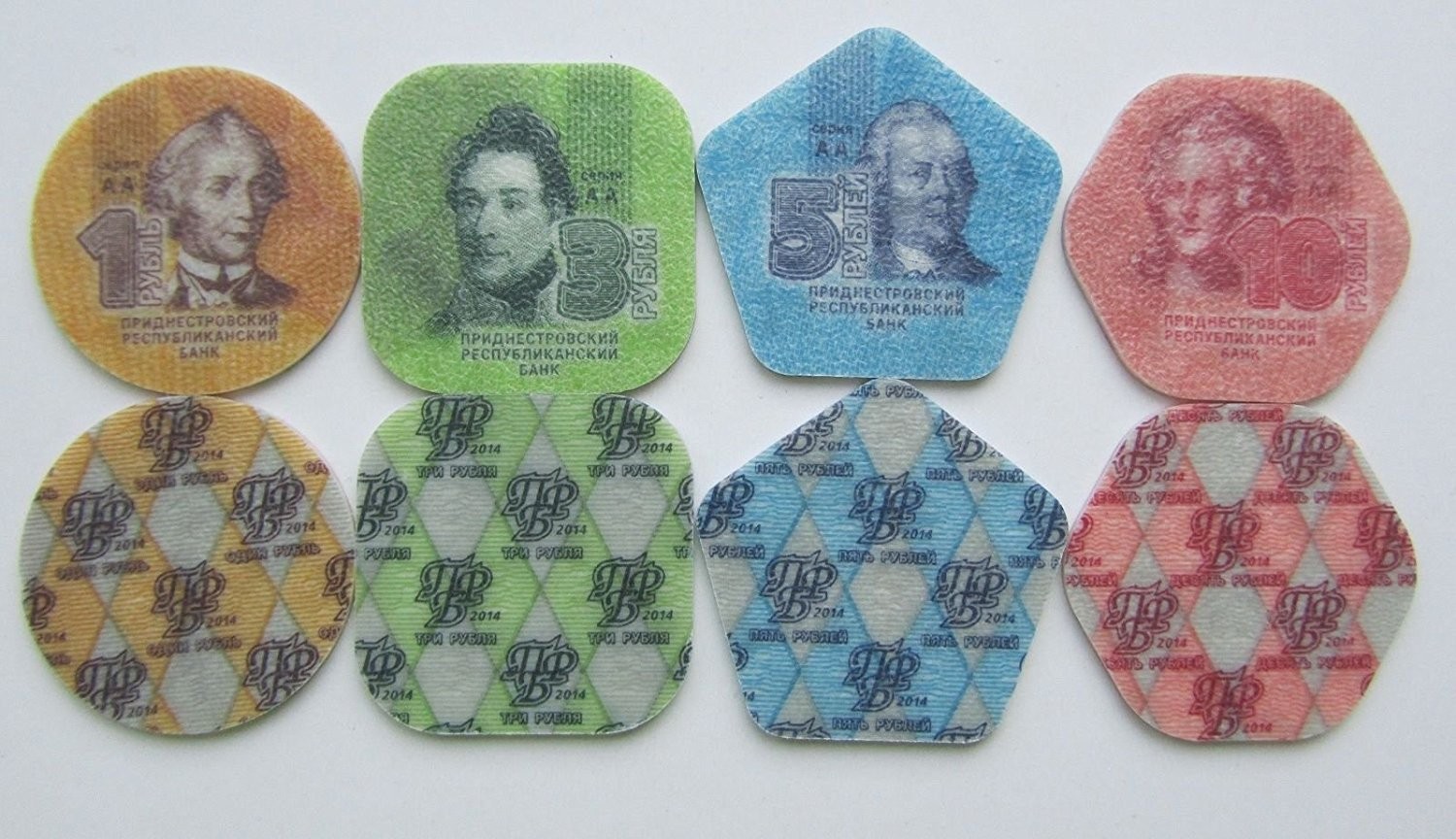
1, 3, 5, 10 Ruble, composite coins, 2014.
Transnistria has its own central bank, which issues the Transnistrian ruble (PRB). The ruble is divided into 100 kopecks and is convertible at a freely floating exchange rate – but only in Transnistria. The coins (1-50 kopecks) are made from aluminium or copper-zinc and are similar to Soviet-era coinage.
The first Transnistrian banknotes were made in a rush in 1993, a couple of years after the self-declared independence. In July of that year, the government bought used Soviet and Russian banknotes from the ’60s, ’70s, ’80s and early ’90s and modified them by adhering stamps bearing the image of the founder of Tiraspol, General Alexander Vasilyevich Suvorov. This temporary issue was swiftly replaced by a new one, also with a portrait of Suvorov.
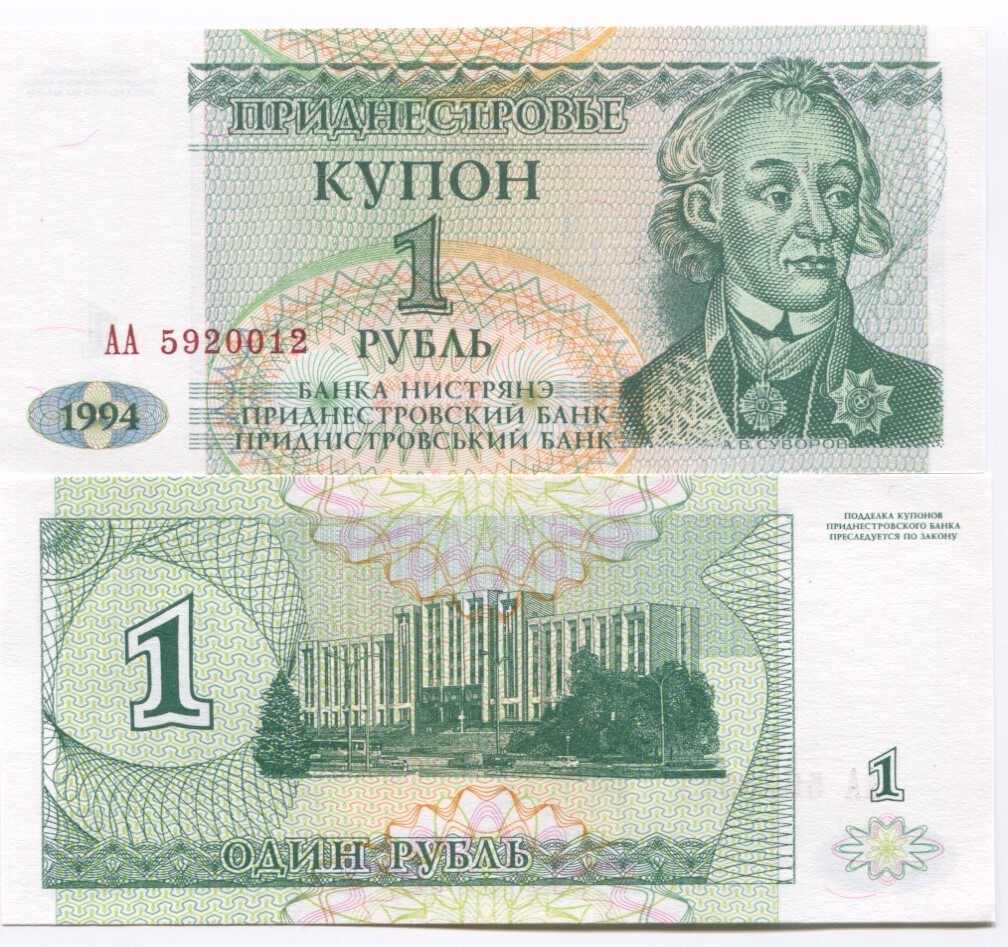
One Ruble issued in 1994.
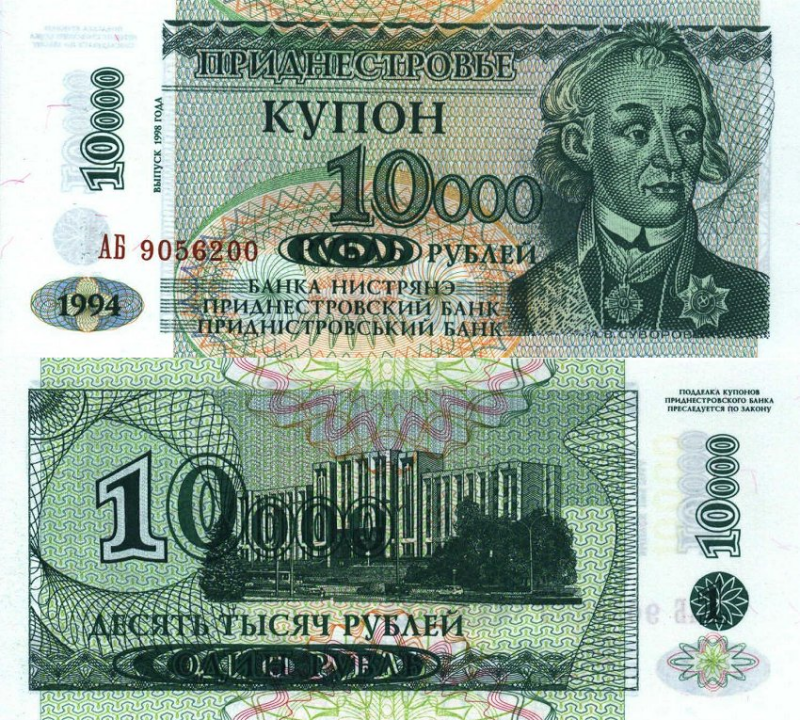
10000 Ruble, extra zero’s printed on a banknote from 1994, distributed in 1998.
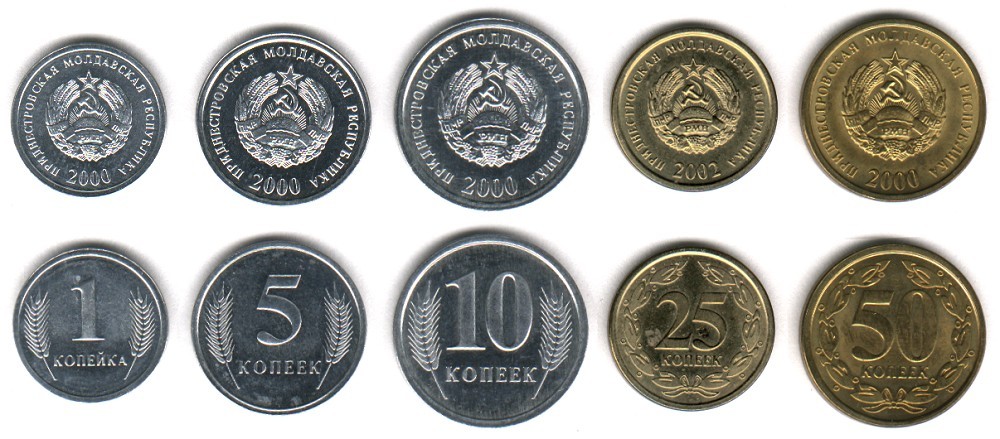
1, 5, 10, 25, 50 Kopeke, 2000.
In 2014, the Transnistrian Republican Bank issued coins made of composite materials, they were to replace the banknotes of the same value. The shape of the coin is determined by its value: more sides, higher value.
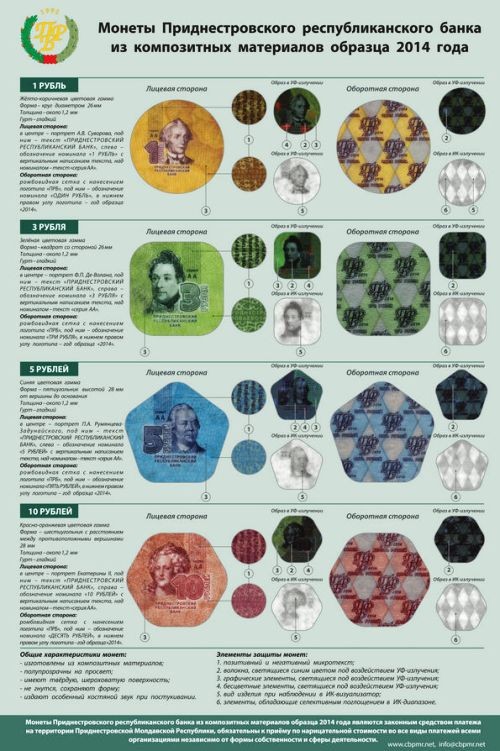
Leaflet from the Transnistrian Republic Bank indicating all the security features of the composite coins, 2014.
www.cbpmr.netThe Transnistrian Ruble is generally not accepted as currency outside Transnistria, though some bus companies with connections to Tiraspol accept Transnistrian rubles at the Chișinău bus station as well as local shops in Varnița, a Moldovan village near the border.